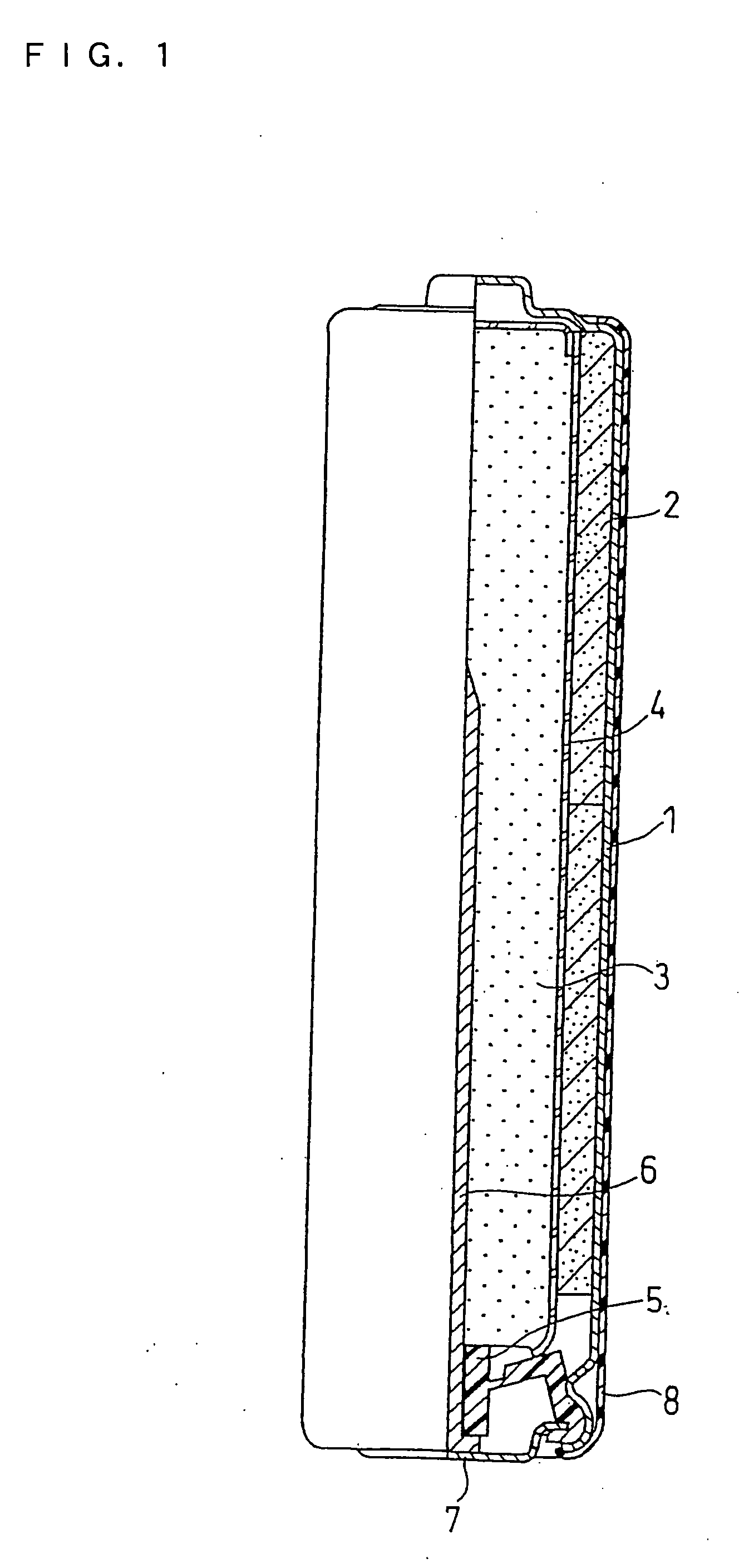Alkaline battery
a technology of alkaline batteries and zinc alloys, applied in the field of alkaline batteries, can solve the problems of internal short circuit, rare resource of zinc alloys added to the proposed zinc alloys in documents 1 and 2, and lowering battery performan
- Summary
- Abstract
- Description
- Claims
- Application Information
AI Technical Summary
Benefits of technology
Problems solved by technology
Method used
Image
Examples
example 1
[0067]An alkaline battery as illustrated in FIG. 1 was produced.
(1) Preparation of Positive Electrode Mixture
[0068]Manganese dioxide (positive electrode active material) and graphite (conductive agent) were mixed together in a weight ratio of 90:10. The powder mixture was then mixed with an alkaline electrolyte in a weight ratio of 100:3, and the resultant mixture was sufficiently stirred and compression molded into flakes. The alkaline electrolyte added to the positive electrode was an aqueous solution containing 36% by weight of potassium hydroxide.
[0069]The flakes of the positive electrode mixture were crushed into granules, which were then classified with a sieve, to obtain the positive electrode mixture of 10 to 100 mesh. The classified positive electrode mixture was molded under pressure into hollow cylindrical positive electrode mixture pellets.
(2) Preparation of Gelled Negative Electrode
[0070]Sodium polyacrylate in an amount of 100 g (available from Nihon Junyaku Co., Ltd.) ...
example 2
[0079]In order to examine the amount of remaining monomer in the gelling agent, a predetermined amount of sodium acrylate which was prepared by neutralizing acrylic acid (special grade reagent available from Tokyo Chemical Industry Co., Ltd.) with sodium hydroxide was added to the sodium polyacrylate used in Example 1, so that the ratio of remaining sodium acrylate was set to 100 ppm.
[0080]A battery of Example 2 was produced in the same manner as in Example 1 except for the use of the sodium polyacrylate having a ratio of remaining sodium acrylate of 100 ppm as the gelling agent.
example 3
[0081]A battery of Example 3 was produced in the same manner as in Example 2 except that the ratio of remaining sodium acrylate was set to 400 ppm.
PUM
 Login to View More
Login to View More Abstract
Description
Claims
Application Information
 Login to View More
Login to View More - R&D
- Intellectual Property
- Life Sciences
- Materials
- Tech Scout
- Unparalleled Data Quality
- Higher Quality Content
- 60% Fewer Hallucinations
Browse by: Latest US Patents, China's latest patents, Technical Efficacy Thesaurus, Application Domain, Technology Topic, Popular Technical Reports.
© 2025 PatSnap. All rights reserved.Legal|Privacy policy|Modern Slavery Act Transparency Statement|Sitemap|About US| Contact US: help@patsnap.com


